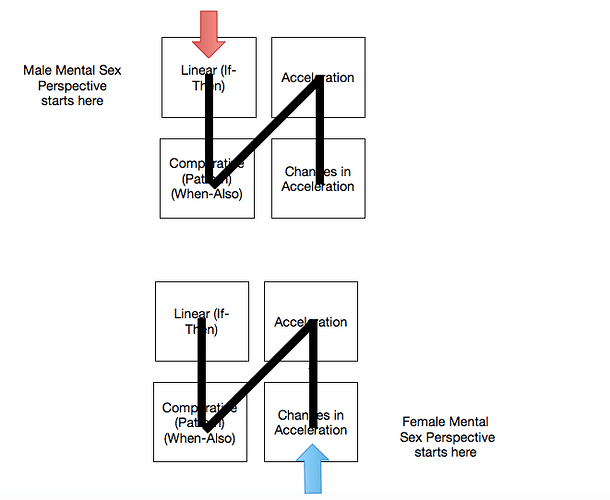This is an illustration drawm from a Melanie Anne Philips article about the Male and Female Mental Sex
http://storymind.com/content/85.htm
Not part of Inside the Clockwork, but I don’t want to force you to hunt for these drawings, so one title will have to do. This is become more The Thought of M.A. Phillips and Chris Huntley.
"Now, the point about male and female seeing Time and Space differently… Imagine that all four of these perceptions are available to both male and female mental sex individuals. But, the male mental sex begins in the linear, then seeks the pattern, then senses the acceleration (indicating the forces at work) and finally arrives at an awareness of the change in the forces through observing change in acceleration. In contrast, female mental sex would FIRST sense the changes in acceleration, then refine that to see the average acceleration (making acceleration appear temporarily constant), THEN see the patterns as being comprised of distinct units of shadow and light, and FINALLY see the linearity of progress from light to dark to light.
Each mental sex would see all four, but due to the ORDER or SEQUENCE in which the perceptions are experienced, the personal MEANING and therefore the VALUE and IMPORTANCE of both the entire scenario AND it�s components would come out differently."
See Melanie’s article for the full explanation.



